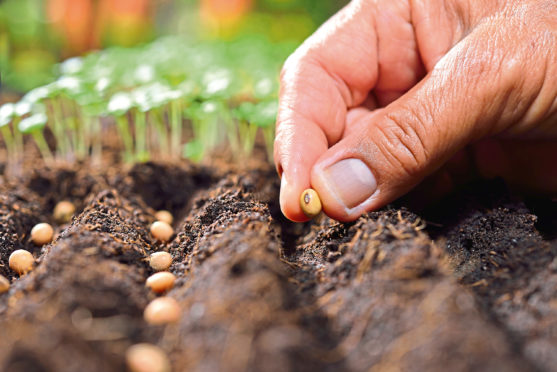
The first of my seed orders have started to arrive and, like gardeners everywhere, I’m eager to get sowing.
But I won’t. Anything sown now will end up weak and skinny, whereas the best seedlings are strong and stout and for that they need plenty of light and we won’t have enough of that until March at the earliest.
There are a few exceptions, of course. Chillies need a long growing season and I know of gardeners who swear by starting tomatoes very early and then planting them deeply to overcome their fragility, and say that this gives them an early crop.
If you’d got lots of seeds and space on the windowsill then it might be worth a try, but otherwise I’d recommend holding off until conditions for growth are more favourable.
Meanwhile, I’m filling my time by drawing up a calendar of what to sow and when, and I’ve been looking into the best way to heat the new greenhouse.
As well as looking at different kinds of electrical heaters, from simple heat bars that attach to the underside of the staging to the sorts of roof-mounted fan heaters with eye-watering price tags that are found in commercial greenhouses, I’ve also been looking at some alternative ways to raise the temperature.
One effective way apparently is to build a hot box and fill it with compost or manure, then let the heat from the decomposition process warm the interior space, but I don’t think I could tolerate either the flies or the smell.
Burying a pipe in the compost heap to draw off the methane and then using this as a fuel source is another possibility, but is only really viable if you have huge amounts of compost and your greenhouse and compost heap share the same space, and ours don’t.
Easier by far is the trick of painting plastic bottles black, filling them with water and lining them up under the staging, where they act as a heat sump, drawing in heat during the day and releasing it at night.
You need lots of bottles of water to make this effective, and as we use very few I think it would probably raise our carbon footprint if we started drinking more bottled water in order to lift the temperature of the greenhouse by a degree or two.
So mostly my plan is to insulate, lining the inside of the glass with horticultural-grade bubblewrap and sowing seeds in a heated propagator that costs no more to run than a low-watt light bulb. I’ve thought of bringing the plastic growhouses that I’ve used for the last couple of years, under cover to create an extra layer of protection for seedlings that need cosseting.
And I’m also trying to work out if I’d have enough space and heat to keep an abutilon thriving through winter. However large this greenhouse is, I’m not sure that it will be big enough.
Gardening expert Agnes Stevenson tells us to resist the urge to get the seeds in – it’s not time yet unless you want weak, skinny plants in your garden!

Enjoy the convenience of having The Sunday Post delivered as a digital ePaper straight to your smartphone, tablet or computer.
Subscribe for only £5.49 a month and enjoy all the benefits of the printed paper as a digital replica.
Subscribe